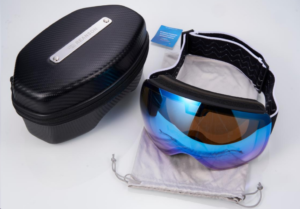For many novice skiers, choosing the right ski goggles can be quite confusing. Often, they focus solely on the appearance and color of the goggles, leading to a less-than-ideal skiing experience. In this article, we’ll share some tips on how to choose the perfect ski goggles to enhance your skiing adventures.
Tip 1. Lens Color Selection
Choosing the right lens color can significantly enhance your skiing experience:
- In low light and foggy conditions,yellow, and amber lenses filter out blue light, highlighting shadows in the snow to help you see bumps more clearly. These lenses are also effective in medium and variable light conditions.
- Light rose and rose copper lensesare also excellent in low light conditions.
- In bright light,dark colors like blue, red, dark gray, and dark green lenses increase contrast and make your eyes more comfortable. Gray lenses also help you see true colors.
- For skiing at sunset and night,clear lenses are recommended because they have the highest VLT (Visible Light Transmission), allowing the most light to enter your eyes.
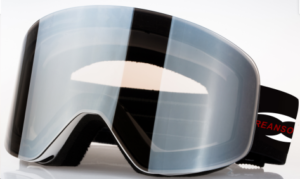

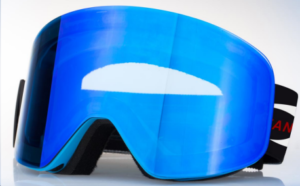
The depth of lens color affects VLT, so choosing the right color and VLT can improve color contrast and reduce eye strain. Lower VLT values (e.g., 15%) mean less eye fatigue on sunny days, while higher VLT values (e.g., 70%) improve color and depth perception in low-light conditions.
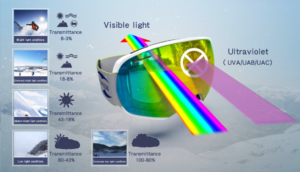
Tip 2. Anti-Fog Solutions
Foggy lenses can ruin your skiing experience. Here are some tips to avoid fogging:
- Double lenses:These create a thermal barrier, preventing condensation from warm, moist air inside the goggles.
- Ventilation:Look for goggles with good ventilation to help expel warm air and keep the temperature inside the goggles close to the outside temperature.
- Anti-fog coating:Modern goggles often feature an anti-fog coating on the inner lens surface to maintain clear vision. Always refer to the packaging instructions for guidance when selecting ski goggles.
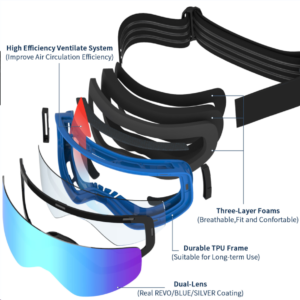
Tip 3. UV Protection
Ensure your goggles offer 100% UV protection. This feature shields your eyes from harmful UVA and UVB rays, which can cause short-term and long-term eye damage. Even on cloudy days, these rays can reflect off the snow and into your eyes, so it’s essential to have proper UV protection.
Tip 4. Good Peripheral Vision
When trying on ski goggles, make sure they provide a wide field of vision. Ideally, you should be able to see 180 degrees from side to side to help you avoid other skiers and obstacles.
Tip 5. Helmet Compatibility
Most ski goggles are designed to be compatible with helmets, but it’s still important to try them on together to ensure a comfortable fit. Goggles with anti-slip silicone strips on the strap are especially useful for keeping them securely in place on your helmet.
Tip 6. Adjustable Straps
Most ski goggles come with adjustable straps for a snug fit. High-quality goggles often feature clips made of durable nylon, which provides better pressure resistance and flexibility compared to polycarbonate clips, making them more comfortable to wear.
Tip 7. Face Foam
Foam padding prevents the lens from directly contacting your face, absorbs sweat to keep your face dry, and provides cushioning during impacts. High-end ski goggles may feature two to three layers of foam, with the layer in contact with your face covered in soft fleece treated for anti-bacterial and anti-allergy properties, ensuring comfort and safety.
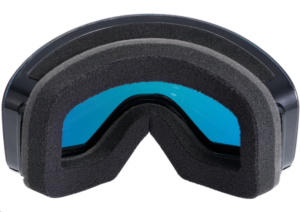
Tip 8. Standard Fit or Asian Fit
Some ski goggles are labeled as “Asian fit,” designed with thicker foam around the nose bridge to accommodate higher cheekbones and shallower nose bridges. If you have a higher cheekbone structure or shallower nose bridge, consider choosing “Asian fit” goggles.
Tip 9. OTG (Over the Glasses) Function
If you wear glasses, look for goggles with the OTG feature. These goggles are designed to fit over your glasses comfortably, distributing pressure to avoid discomfort on your nose and ears.
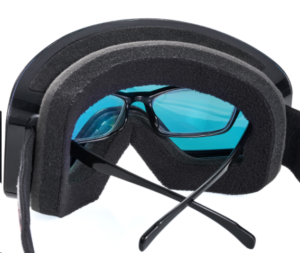
Tip 10. Flexible Frames
Most modern ski goggle frames are made of TPU (Thermoplastic Polyurethane), which is lightweight, flexible, and durable. These frames maintain their shape and flexibility even in cold temperatures, reducing the risk of lens breakage or dislodgement during a fall. Flexible frames also improve comfort and fit.
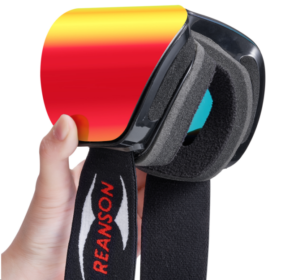
By understanding these essential aspects of ski goggles, you can confidently choose the best pair to meet your needs and preferences. Investing in the right goggles will not only enhance your comfort and safety but also optimize your performance on the slopes. Happy skiing!

